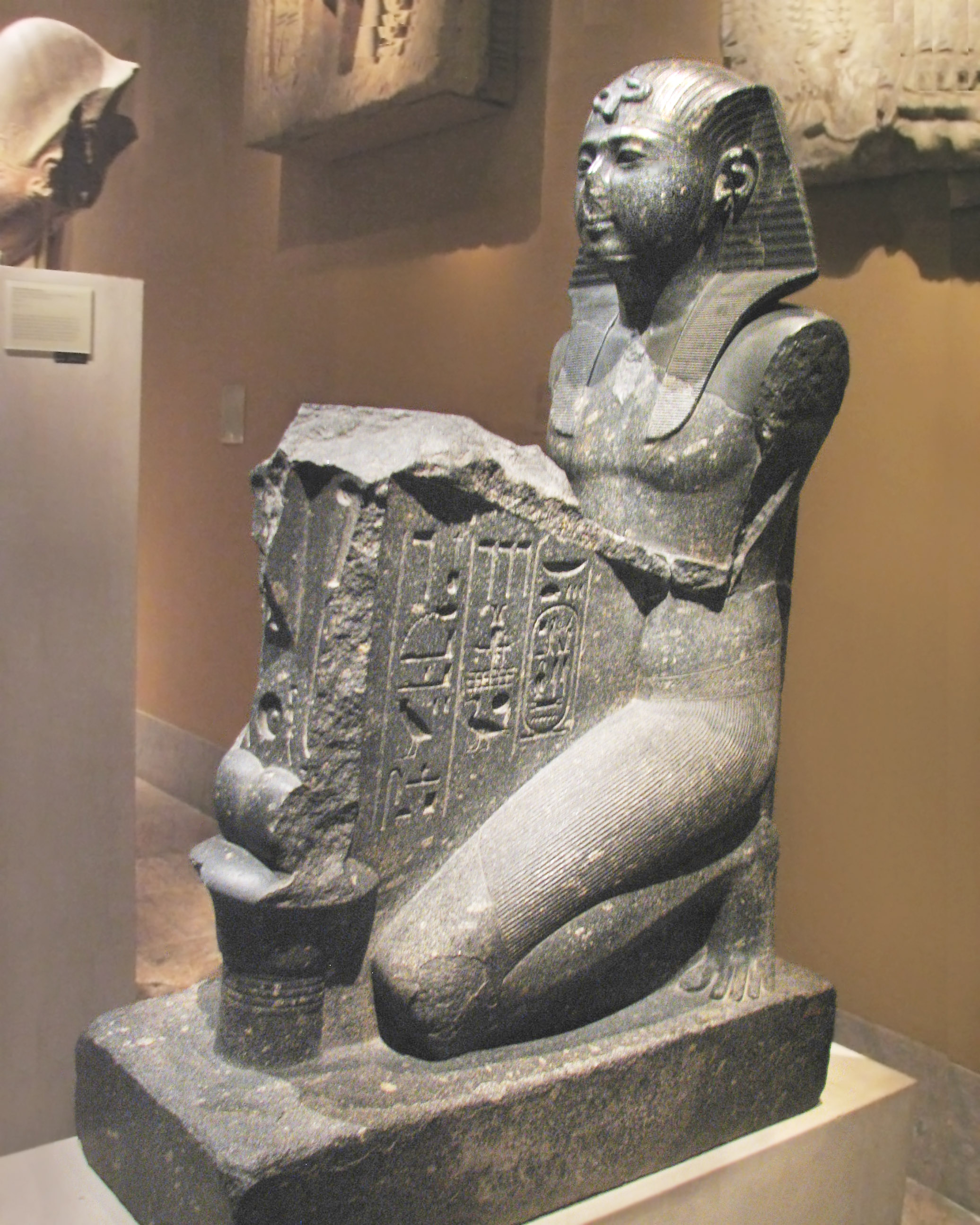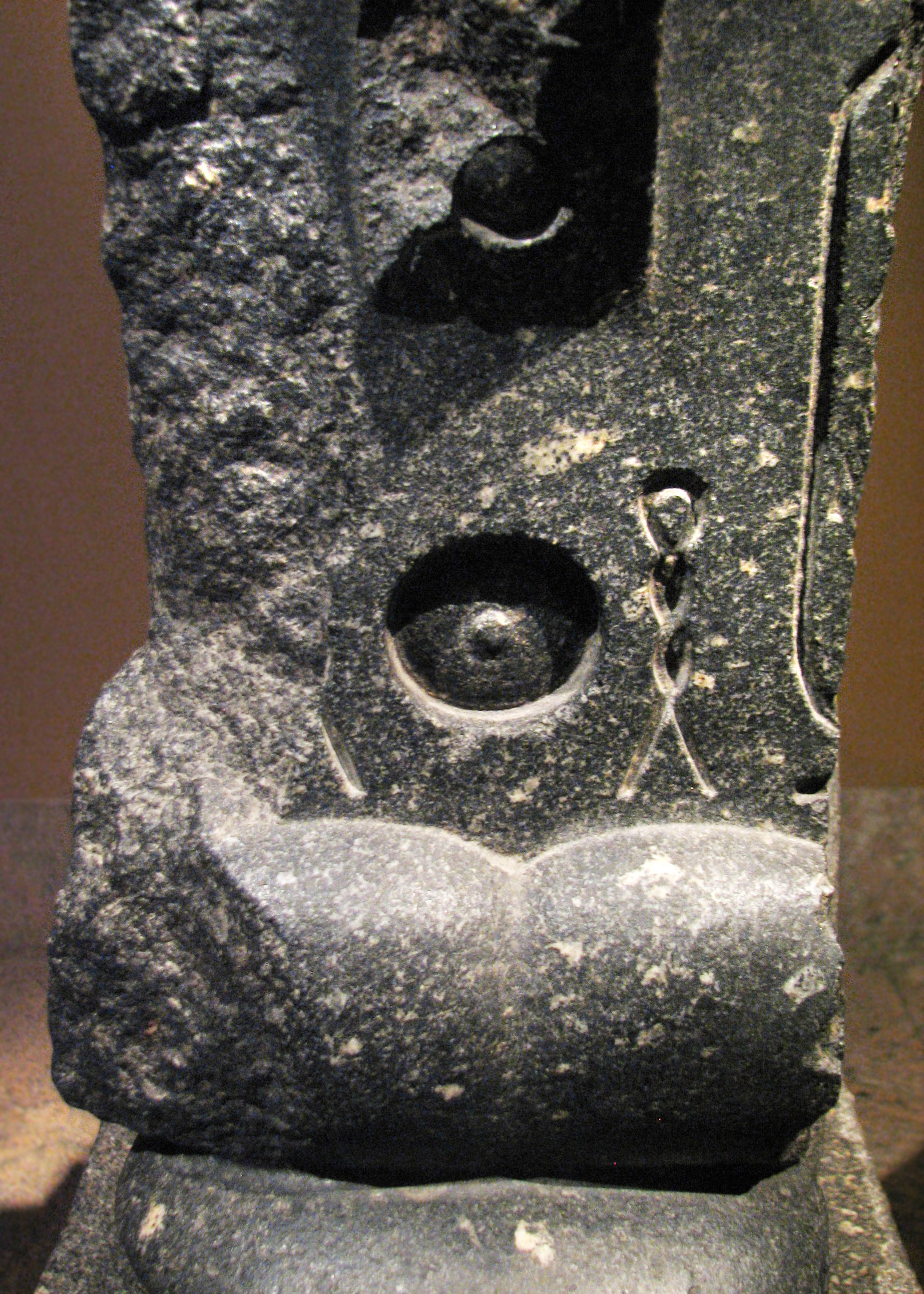
Statue of Seti I
Dynasty 19, reign of Seti I (ca. 1294-1279 B.C.E)
Probably from Abydos, based on inscription
Granodiorite, H. 114.5 cm (45 1/16 in); w. 35 cm (13 3/4 in); d. 75.5 cm (29 3/4 in)
Rogers Fund, 1922, MMA 22.2.21

Statue of Seti I
Dynasty 19, reign of Seti I (ca. 1294-1279 B.C.E)
Probably from Abydos, based on inscription
Granodiorite, H. 114.5 cm (45 1/16 in); w. 35 cm (13 3/4 in); d. 75.5 cm (29 3/4 in)
Rogers Fund, 1922, MMA 22.2.21
|
(From the info card):
Peter Brand gives further information:
"Sourouzian would assign this statue to an intermediate phase in the sculpture of the king, earler than the Dallas bust, and the differences in style between the two sculptures are slight, and they are more than likely contempory works, possibly by different hands. If much of the statuary for this and other temples was begun rather late in the reign as construction of the building neared completion, which Sourouzian herself posits, then they are probably more or less contemporary. The piece appears to be a companion to a fragmentary statue now in Sorrento. The table of the latter is supported by a lotus stalk, both sculptures being identical in their scale, iconography and material."
The papyrus blossom is more than decorative. The use of papyrus plant is suggesting empowerment, as of upwards rising sap which flows from the root of the plant to its branches, (similar to
that implied in the Was scepter). It is interesting to examine what remains of the front:
 Detail view from front Although it is quite damaged, we can still make out the 'neheh':
"Upon his ascension, he took the prenomen mn-m3‘t-r‘, which translates as Menmaatre in Egyptian, meaning "Eternal is the Justice of Re.."[6] Ma'at is a bit more complicated concept than 'justice', although justice does figure into the sense of balance and truth which is the underpinning of Egyptian philosophy. Also 'eternal' is a bit more complex than our limited English language. Egyptians had two concepts of 'eternity'. As Traunecker explains, the concept of Neheh (cyclical futurity) corresponds to Re while the concept of Djet (unchanging futurity) corresponds to Osiris. Neheh has all to do with the rising sun, beginnings and perpetual renewal. Seti I is expounding on his prenomen, declaring that he will set forth actions which will perpetually renew Ma'at, (truth, balance and justice). I wish we could see what was above the neheh hieroglyph, was it an image of Ma'at?
  
|